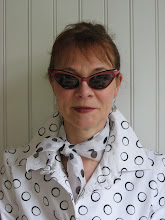 I was relieved we found a nice room in Pisac with a ‘bano’ down the hall. We seem to spend half our time drinking gallons of water to offset altitude and the other half looking for toilets. Concentration is required though: Peruvian plumbing allows for ‘organic material’ only, and several times I have forgotten and had to fish out loo roll before flushing. Thank goodness that’s only happened with number 1s so far!
I was relieved we found a nice room in Pisac with a ‘bano’ down the hall. We seem to spend half our time drinking gallons of water to offset altitude and the other half looking for toilets. Concentration is required though: Peruvian plumbing allows for ‘organic material’ only, and several times I have forgotten and had to fish out loo roll before flushing. Thank goodness that’s only happened with number 1s so far!First thing this morning we hiked up to the ruins, from whence we got a marvelous view of valley, town and tiny market way down below. Pisac’s Sunday market is famous, full of ceramics, jewelry, weavings, toys, woolens, brass. Hamish was torn between two carved chess sets, one pitting Spanish soldiers against Inca natives, the other, condors against llamas, but they are both too large to carry around. The market sprawled through narrow lanes, wide enough only for walking, a channel built down the middle to carry water and garbage. The odd pig or llama perambulation. I think of the first contact, and don’t wonder the Incas fell in awe when the Spaniards arrived on horseback. With no vehicles or pack animals of their own, llamas not able to carry much, a man on a horse must have appeared as one creature, ten feet tall with four legs and armour plating.
An old lady joined us as we walked – we always seem to attract old people and children - unspeaking, then gave us a flat roll of bread before she went off on her way. Proud people. This would have been the edge of the Inca territory. Such an empire. Mathematics, architecture, astronomy and agriculture flourished without tools as basic as a written language or the wheel. Those massive stones placed in walls with no wheel! No mortar either. How on earth did they do it? So many well-engineered mountain roads, too, but no maps of any of them. No documents at all. Amazing to think the Incan culture was only around for a hundred years or so, already on its way out before Pizarro even arrived, civil war breaking it apart. And while the Spanish plundered and hastened the inevitable, in so doing they chronicled a culture that would otherwise be unknown. So many other cultures remain mysteries, the Nasca, Easter Island. I wonder what more we would know about them if they had had the unlucky luck to have raiders who kept records.
 As we wandered we received smileless nods and toothly grins. We hand out coloured pencils and tiny globes to children, showing them their country and ours, which they examine before stuffing them under their ponchos. There can’t be many countries in the world left in which inhabitants dress as their ancestors did. I’ve seen photos upon photos, but somehow being here, seeing it for myself, smelling and tasting and hearing, something I’d lost from working in an office filters back. For the first time I question my choice of work, in what, six years? No seven. Can it be seven years that I’ve been working there? I’m in a rut. I don’t travel for pleasure anymore. No wonder I’m so miserable. Tying to make each edition the best, each map the best, the most well researched, the most dynamic, then moving on to the next one, and on and on. Maybe seven years is too long for anything. Living in one place, doing one thing, loving one person.
As we wandered we received smileless nods and toothly grins. We hand out coloured pencils and tiny globes to children, showing them their country and ours, which they examine before stuffing them under their ponchos. There can’t be many countries in the world left in which inhabitants dress as their ancestors did. I’ve seen photos upon photos, but somehow being here, seeing it for myself, smelling and tasting and hearing, something I’d lost from working in an office filters back. For the first time I question my choice of work, in what, six years? No seven. Can it be seven years that I’ve been working there? I’m in a rut. I don’t travel for pleasure anymore. No wonder I’m so miserable. Tying to make each edition the best, each map the best, the most well researched, the most dynamic, then moving on to the next one, and on and on. Maybe seven years is too long for anything. Living in one place, doing one thing, loving one person.I look around and think this is where it begins. The actual place. Not necessarily just here, but any place. Old land peopled by centuries of civilizations that come and go, some lost, some known. I thought of our evening ensemble conversation in Cusco. How will we know what happens in places like this unless we are there to see it? To somehow be able to see it from wherever we are. To learn first hand, even if we can’t be lucky enough to travel here in person. I think I need to reevaluate. Maybe do something that is more in the world, to document today somehow, create a portal or something that is relevant to everyone, a farmer in Bolivia and a geologist in Belgium.


No comments:
Post a Comment